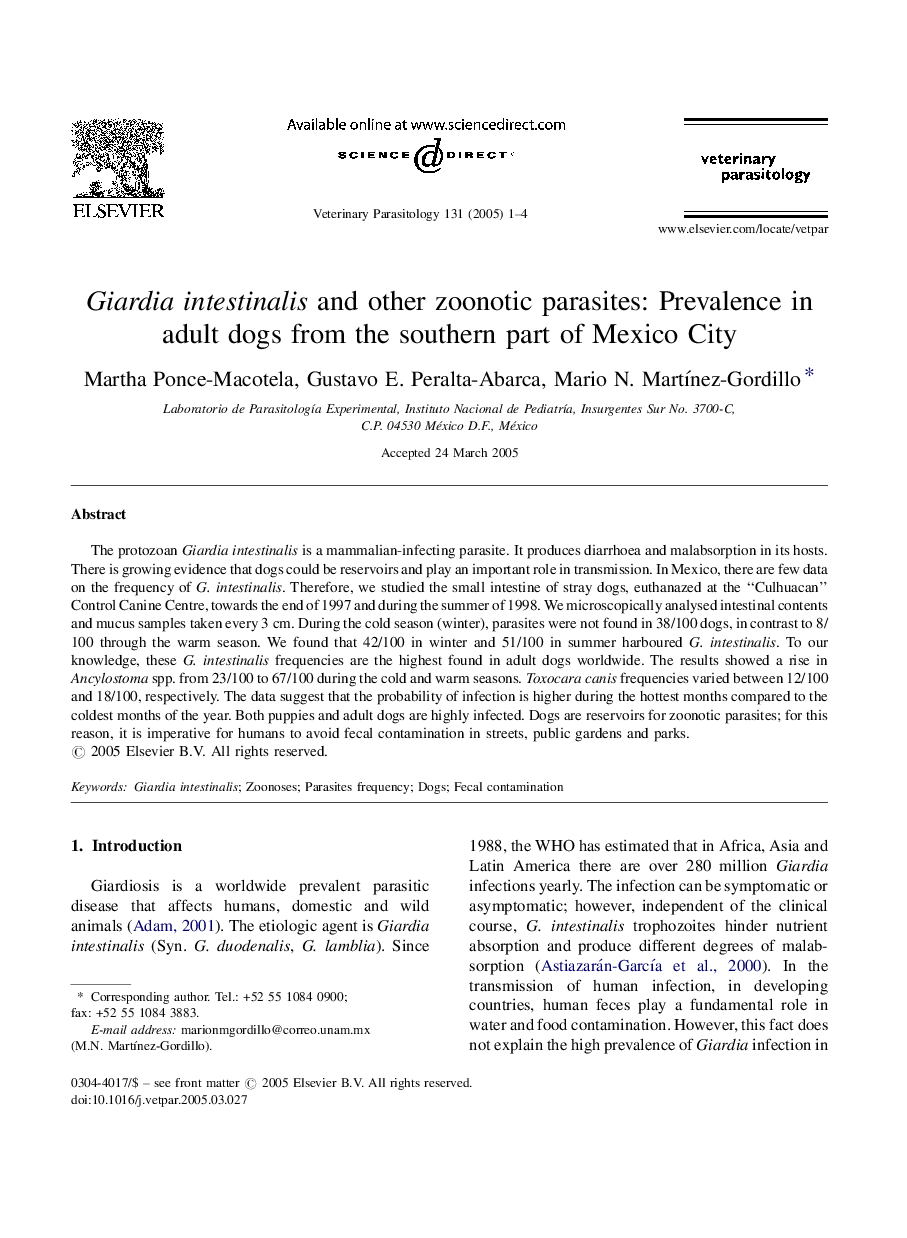| Article ID | Journal | Published Year | Pages | File Type |
|---|---|---|---|---|
| 8990940 | Veterinary Parasitology | 2005 | 4 Pages |
Abstract
The protozoan Giardia intestinalis is a mammalian-infecting parasite. It produces diarrhoea and malabsorption in its hosts. There is growing evidence that dogs could be reservoirs and play an important role in transmission. In Mexico, there are few data on the frequency of G. intestinalis. Therefore, we studied the small intestine of stray dogs, euthanazed at the “Culhuacan” Control Canine Centre, towards the end of 1997 and during the summer of 1998. We microscopically analysed intestinal contents and mucus samples taken every 3Â cm. During the cold season (winter), parasites were not found in 38/100 dogs, in contrast to 8/100 through the warm season. We found that 42/100 in winter and 51/100 in summer harboured G. intestinalis. To our knowledge, these G. intestinalis frequencies are the highest found in adult dogs worldwide. The results showed a rise in Ancylostoma spp. from 23/100 to 67/100 during the cold and warm seasons. Toxocara canis frequencies varied between 12/100 and 18/100, respectively. The data suggest that the probability of infection is higher during the hottest months compared to the coldest months of the year. Both puppies and adult dogs are highly infected. Dogs are reservoirs for zoonotic parasites; for this reason, it is imperative for humans to avoid fecal contamination in streets, public gardens and parks.
Related Topics
Life Sciences
Agricultural and Biological Sciences
Animal Science and Zoology
Authors
Martha Ponce-Macotela, Gustavo E. Peralta-Abarca, Mario N. MartÃnez-Gordillo,
